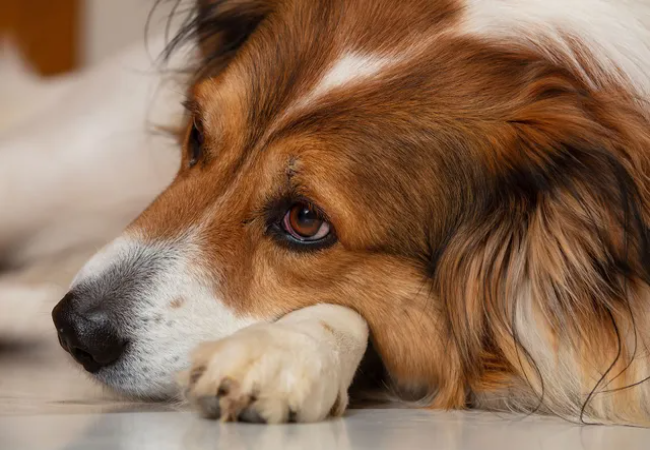Canine Osteochondrosis (OCD) – Vet Guide 2025 🐶🦴🩺

In this article
Canine Osteochondrosis (OCD) – Vet Guide 2025 🐶🦴🩺
By Dr. Duncan Houston BVSc
Hi! I’m Dr Duncan Houston, BVSc, founder of Ask A Vet. If your young, growing dog—especially a large breed—is limping intermittently, it could be osteochondrosis, a developmental joint disorder where cartilage doesn’t form properly. Left untreated, it often progresses to pain and early osteoarthritis. In this extensive 2025 guide, we’ll discuss causes, clinical signs, cutting-edge diagnostic strategies (imaging and arthroscopy), advanced treatments like grafting, and home care to protect joint health early. Let’s preserve your pup’s mobility and future! 💙
📘 What Is Osteochondrosis & OCD?
Osteochondrosis (OC) is a developmental defect in endochondral ossification—the process of cartilage turning to bone—causing thickened cartilage prone to cracking. When fragments form or cartilage flaps detach, the condition is called osteochondritis dissecans (OCD). This leads to pain, synovitis, and can initiate early arthritis.
🧬 Breed & Age Risk Factors
- Young, rapidly growing dogs (5–18 months), often large or giant breeds.
- Male dogs are slightly more affected.
- Multifactorial causes: genetic predisposition, rapid growth, over-nutrition (too much calcium/protein), trauma, hormonal factors.
- Common sites: shoulder, elbow, stifle, tarsus/hock—up to 30‑60% bilateral in some joints.
🚩 Signs & Clinical Presentation
- Intermittent to persistent lameness, worsened post-exercise.
- \Joint effusion, swelling, pain on manipulation, reduced range of motion.
- "Joint mice"—loose bone/cartilage fragments causing clicking or abrupt pain.
- Symptoms may come and go, related to activity or fragment migration.
🔍 Diagnosing OCD
- History & exam: note age, breed, lameness pattern, palpation findings.
- Radiography: look for subchondral lucency, flattening, debris, osteophytes, and effusion.
- Ultrasonography: effective for shoulder lesions; sensitivity ~92% comparable to radiographs.
- CT/MRI: best for fragment visualization and planning surgery.
- Arthroscopy: gold standard for diagnosis & treatment, especially in hock/shoulder.
💉 Treatment Options
🔧 Conservative Management
Useful for mild lesions without fragments. Includes exercise restriction, NSAIDs, weight control, physical rehabilitation. However, long-term prognosis is guarded—arthritis often develops.
🔪 Surgical Intervention
- Arthroscopic/open removal of cartilage flaps/fragments and curettage of subchondral bone—speeds recovery and limits arthritis.
- Osteochondral autograft (OATS): an advanced grafting technique transferring healthy cartilage to the defect, preserving joint surface.
- A 2025 study on tarsocrural OCD with modified arthroscopic portal reported >75% good to excellent outcomes, though arthritis progressed mildly.
- OATS offers symptom relief, but arthritis risk remains over time.
💊 Post-Surgical & Rehab Care
- NSAIDs (e.g., carprofen, meloxicam) reduce inflammation and pain.
- Physical therapy: controlled exercise, hydrotherapy, laser, stretching to restore joint function.
- Joint supplements: glucosamine‑chondroitin, polysulfated glycosaminoglycan (Adequan), omega-3s—vet-recommended support.
📅 Prognosis & Long-Term Outlook
- Shoulder lesions have an excellent prognosis; stifle is good; elbow/hock fair due to joint complexity.
- Arthroscopy often results in fast lameness resolution; OATS yields durable joint surface restoration but arthritis may occur later.
- Early diagnosis and treatment are critical to optimize joint function and lifespan.
🏠 Home Management & Prevention
- Moderate feeding: avoid rapid growth—balanced diet with appropriate calcium/protein.
- Controlled activity: no high-impact playing in puppies.
- Regular vet screenings: orthopedic exams in high-risk breeds, radiographs at 5–8 months.
- Early rehab: physical therapy after surgery to maintain joint mobility.
- Weight monitoring: lean body condition reduces joint stress.
✨ Key Takeaways
- OC/OCD arises in large breeds due to faulty cartilage ossification.
- Typical signs are intermittent lameness, joint swelling, and discomfort.
- Diagnosis involves imaging (X-ray, US, CT) and best confirmed via arthroscopy.
- Surgery—arthroscopy with fragment removal or advanced OATS—is key to recovery.
- Post-op care includes NSAIDs, rehab, and joint supplements.
- Early intervention improves joint health and reduces long-term arthritis.
- Home strategies focus on balanced nutrition, safe exercise, and regular vet checks.
🐾 Ask A Vet
- Discuss imaging and surgical options with orthopedic experts via Ask A Vet.
If your puppy shows lameness, swelling, or joint pain, especially during growth, please seek evaluation promptly. Early diagnosis greatly improves joint outcomes and lifelong mobility. 🩺






